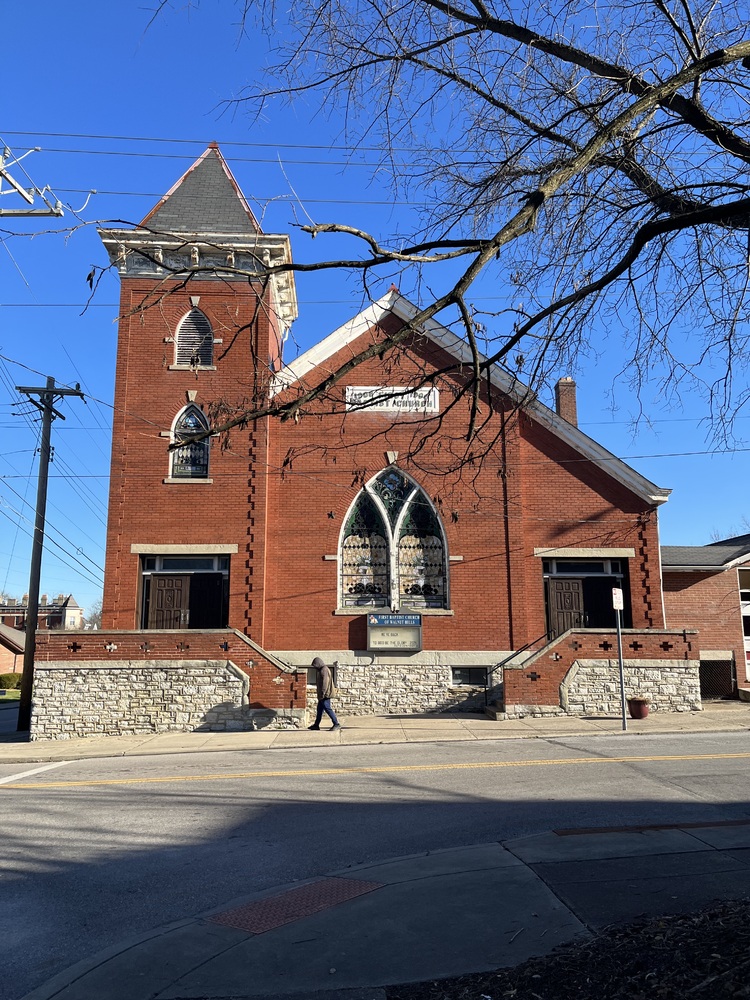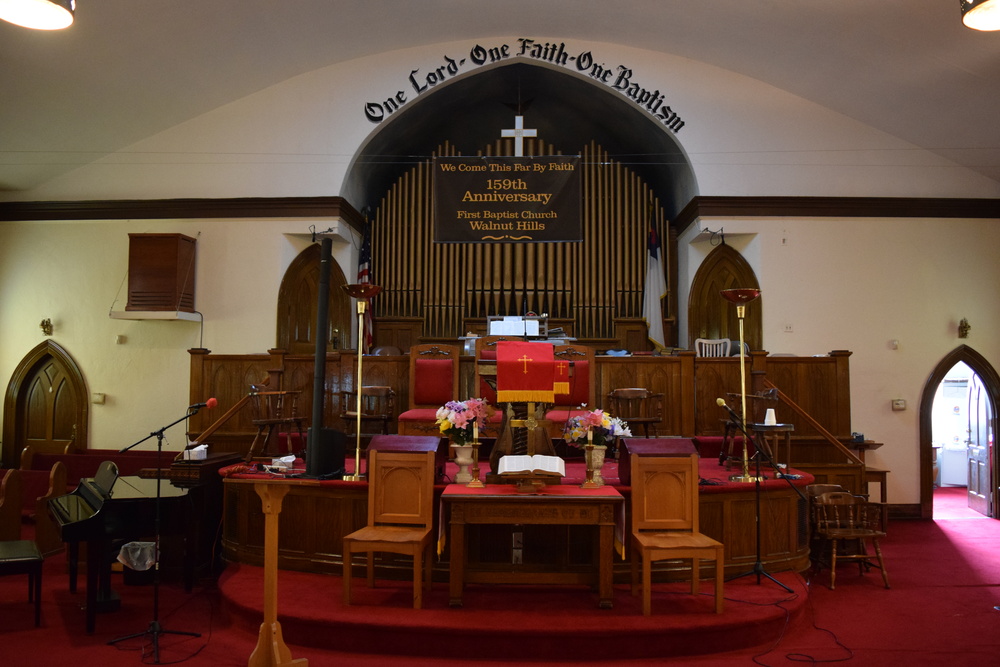First Baptist Church of Walnut Hills
Serving the local Black community since the mid-1800s.

Historically significant for its strong ties to the African American community in Walnut Hills.
Early History
Prior to 1863, the only church that existed in the Walnut Hills area was called “First Church'' and was composed of a joint Baptist and Methodist congregation, who worshiped out of the “old Rudolph” residence on Park Avenue. Although these congregations held their church services together, some respective customs were different, such as the Baptist’s communion customs, which would be held at sister churches.
The First Church was organized around 1856, however, by 1863, the Methodists withdrew from the Baptist worshipers. As such, the remaining Baptist members, Gorgina Earley, Joseph Earley, Whitfield Earley, Hartwell Parham, and William H. Bush called a council composed of officers of the Union Baptist and Zion Baptist Churches to propose the organization of a new, small body independent church. Within the same year, they formed the First Baptist Church of Walnut Hills with fifteen members.
First Pastor: Dangerfield Earley
The first pastor of the church was Reverend Dangerfield Earley, a licensed pastor who previously served at Union Baptist Church. Under Rev. Earley, the congregation moved to the old Earley property on Willow Street. Rev. Earley served as pastor of the First Baptist Church of Walnut Hills until 1876, when he resigned and A. F. Darnell took over leadership. Under Rev. Darnell, the church reached 52 members and outgrew their space, necessitating the construction of a new church building. They relocated to Chestnut Street (now Foraker Avenue), where Rev. Darnell had purchased a lot for $1250 and commissioned Brother Frank Reeder to construct a new building for $850.
According to church records, the congregation may have moved to a modest frame church building on Lincoln Avenue. Rev. Darnell organized the first choir in 1883, having recognized the importance of music to worship, devotion, and evangelistic services. The first choir director was Brother Gregory; however, a few years later, Mrs. Mary Bowen was elected president of the choir and Mrs. Rose Bradley was elected as choir director and accompanist.
On April 22, 1894, Rev. Richard D. Phillips became the new pastor after Rev. Darnell resigned. In 1897, the congregation proceeded to elect trustees and deacons of the church. Unfortunately, after Rev. Phillips resigned in January 1901, the church had trouble finding a permanent pastor. Moreover, their church building on Lincoln was becoming too small for their congregation. It wasn’t until 1903 that they officially brought on Rev. F. P. Green to serve as pastor. Rev. Green presented a plan to raise money for a new brick church building to seat 500. The cornerstone for the building was laid in 1908. Soon, church activities required more room and, as such, Rev. Green rallied to raise funds to build an annex for sunday school classes. In 1926, a new organ was installed and Professor Clinton Gibbs came to serve as Minister of Music, which he would do for 44 years. Under Gibbs’ direction, the First Baptist Senior Choir became known as one of the Midwest’s most outstanding choirs.
Mid-20th CenturyThroughout the 1930s, the church formed groups to tackle building repairs. During the 1940s, a children’s band was organized. By 1944, the church held their mortgage burning ceremony, commemorating their last payment for the annex. In 1946, the Betty Robinson Bulletin Board Club (B.R.B.) was organized for the purpose of “securing furnishing and equipment for the general enhancement of the church.”
Sadly, Rev. Green passed away in 1948, after having served as pastor of the church for 45 years. This same year, Rev. Burrell E. Edmonson came from Springfield, Ohio to pastor the church. Rev. Edmonson instituted the Nurses Guild and respective training courses – led by all female officers. Under the reverend, the B. R. B. increased from five to 35 members and accomplished many goals, such as furnishing the pastor's study, purchasing 100 pieces of a collection of china for the kitchen, and installing a carpet for the sanctuary. Under Rev. Edmonson, the church witnessed great success in membership and club growth. By 1965, Mrs. Mary Bowman became supervisor of the children’s band. With Mrs. Bowman in charge, the group began visiting area nursing homes where they would take meals to the sick, share gospel (in song), and attend annual retreats.
In 1976, Rev. Edmonson purchased new property on Park Avenue, adjacent to the church for the purposes of expanding their building to accommodate their many new activities. As a result, a new addition was constructed as their “Educational Building”, which housed classrooms. Furthermore, the church modernized their building to include air conditioning.
A year later, Rev Edmonson resigned from the church after 29 years as pastor. After his tenure, a myriad of new pastors would serve the church and continue to uphold the congregation's religious values, however, the economic decline of the Walnut Hills neighborhood led to decreased church membership. Today, there are only about 35 members of the First Baptist Church of Walnut Hills. Still, the church remains owners of their building and adjacent properties, which are currently vacant lots.
Images

